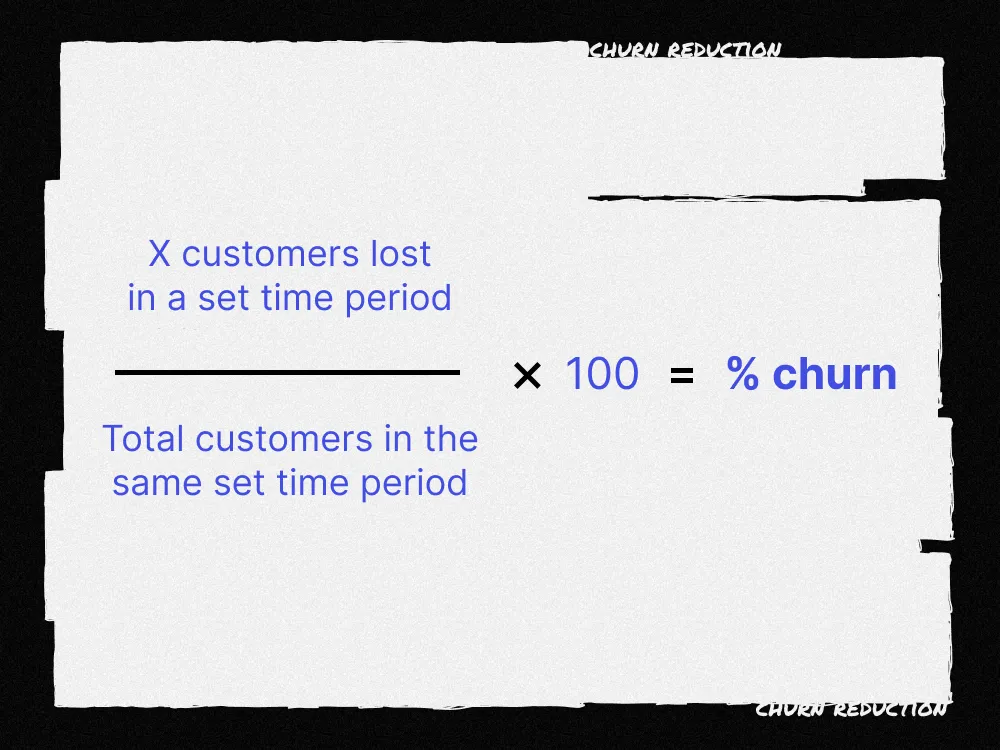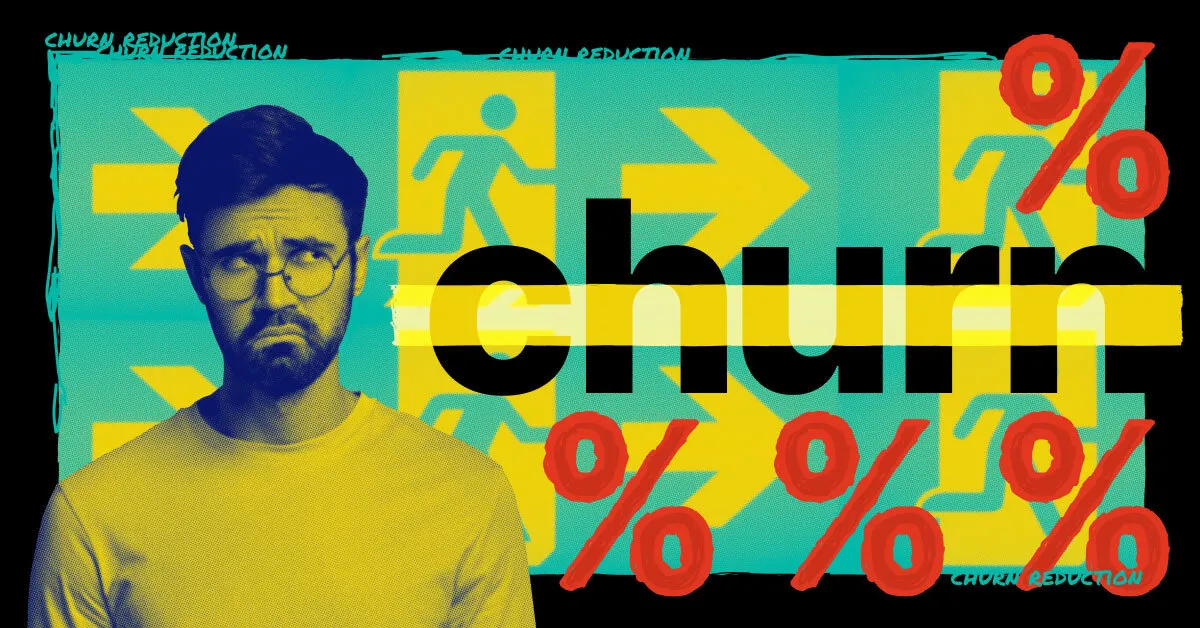What is customer churn?
It’s said that it’s easier to retain a customer than to get a new one. Studies show that it can cost anywhere from five to 25 times the cost to get a new client, depending on industry. Think about what you can do with that money if you can reduce customer churn.
Churn, according to PartnerStack’s Emma Sinai, Manager of Customer Success, is when a customer no longer wants to use your product or service and leaves.
How to calculate churn
There are formulas to easily calculate the churn rate of your customers. Take the number of customers your business has lost and divide it by the number of original customers you had at the start of the period, then multiply by 100. Your period could be quarterly, bi-annually or yearly.
So your churn calculation would look like this:

Every industry has its own metrics. The affiliate marketing industry has a churn rate of around five per cent. Beyond the churn rate, Sinai says that it can be impactful to look at different types of customers to understand patterns of churn in each segment.
“We can expect different levels of churn between our SMB, mid-market, and enterprise customers,” she says, going on to explain that enterprise customers may have lower churn rates because they spend often spend more time aligning with the budget and stakeholders before committing to a business relationship, as we previously covered when we talked about closing partnership deals faster.
On the other hand, SMB and mid-market businesses may see higher customer churn rate as they are testing programs that might serve their needs. And that churn isn’t always a bad thing, which we’ll talk about later.
See more: OKRs for partnerships and how they create alignment, transparency and impact.
So, why does churn happen?
Customers leave for many reasons. Let’s look at the most common:
- Price
- Customer service
- User experience
- Product fit
- Onboarding experience
- Company closure
- Timing
Some of these you can control — such as customer service and user onboarding. Some strategies to address this are discussed in this article on reviving inactive channel partners. Anticipating the needs of customers is essential in keeping them satisfied with your product or service. Reducing churn means taking a proactive approach to identifying and mitigating it. That means recognizing the early signs.
What are the signs that a customer may churn?
One red flag is a lack of engagement, which Sinai calls a key identifier of potential churn. “[When] you have someone at the end of the sales cycle who's just gone through talking to a sales rep, they're ready to buy and they're excited. You want that same kind of engagement and commitment in the customer success journey as well.”
Technology plays a big role in identifying disengaged customers. Sinai says if they're no longer showing up to calls, are not trying to talk about strategy, and are no longer logging into the product — all which can be recorded and tracked — companies should be taking note. It also doesn’t matter the point of the sales cycle the customer is at. “Whether it’s during onboarding or after they've initially adopted — that is a red flag as well.”
Sinai has talked about this before. In a previous article, she says that engagement is more than the dollars your partner is bringing in. Other metrics should include whether your customer is leveraging your information, assets, and even responding to your updates.
Related: How co-marketing strategies can build trust and win you that deal.
Proactive strategies to stop churn: Ask yourself these questions
Once you’ve recognized the signs that a customer may be ready to jump ship, Sinai says it’s time to ask yourself a few questions.
If a customer is no longer showing up and engaged, it’s time to ask where your product or service is missing out on providing them value, Sinai says. “People are going to show up where tools make their job easier, or help them hit their targets. So if they're not showing up, we have to ask what we are missing and do either of those two things.”
According to Sinai, the best way to get back on track with a customer is to realize that they are human. Many things can get in the way of enablement, so it’s important to get to the crux of their issue. “Have a frank conversation as a customer success manager to figure out where that lack of value is stemming from,” Sinai advises.

Preventing churn starts with retention
Reducing churn begins from the first time you connect with a customer. That’s because by the time you recognize the signs that a customer is disengaged, it may be too late.
Instead, Sinai says to focus on retention, and that means ensuring stakeholders understand the value of your product or service. Remembering that there are humans behind each title, and understanding their unique motivations is also key.
Identify what’s valuable to your customers
Sinai notes that some people are new to an organization and it’s important for them to have something that they can report — that star metric that they can be really proud of.
Others may be trying to change the way their organization thinks about something, so they want to take more of a leap and have a bigger impact even if that's going to be a bit further out.
“I think it's about understanding what the person is trying to achieve and how we, as CSMs, partner with them to do that.”
You might also like: Revenue-focused goals following partner activation.
Understand that a customer leaving doesn’t have to be forever
Plus, remembering a goodbye isn’t forever. The timing may not be right for customers to work with you now, but it might be in the future. Sinai says that some companies keep in touch with former customers, while others allow their customer experience to bring customers back.
“We've had customers that have come back to say, ‘We had a really good experience. We weren't ready at the time but things are in place now [and] we want to give this a go’,” Sinai shares about PartnerStack’s own customer network. “In the tech industry people move companies, so it could be that we have a customer who went to a new company and now they're like, ‘I want to implement this here.’” Make your product, customer service and reputation something that they’ll want to come back to when the fit is right.









.webp)







